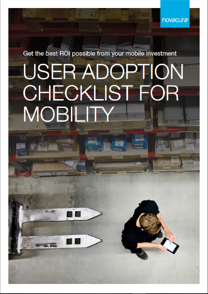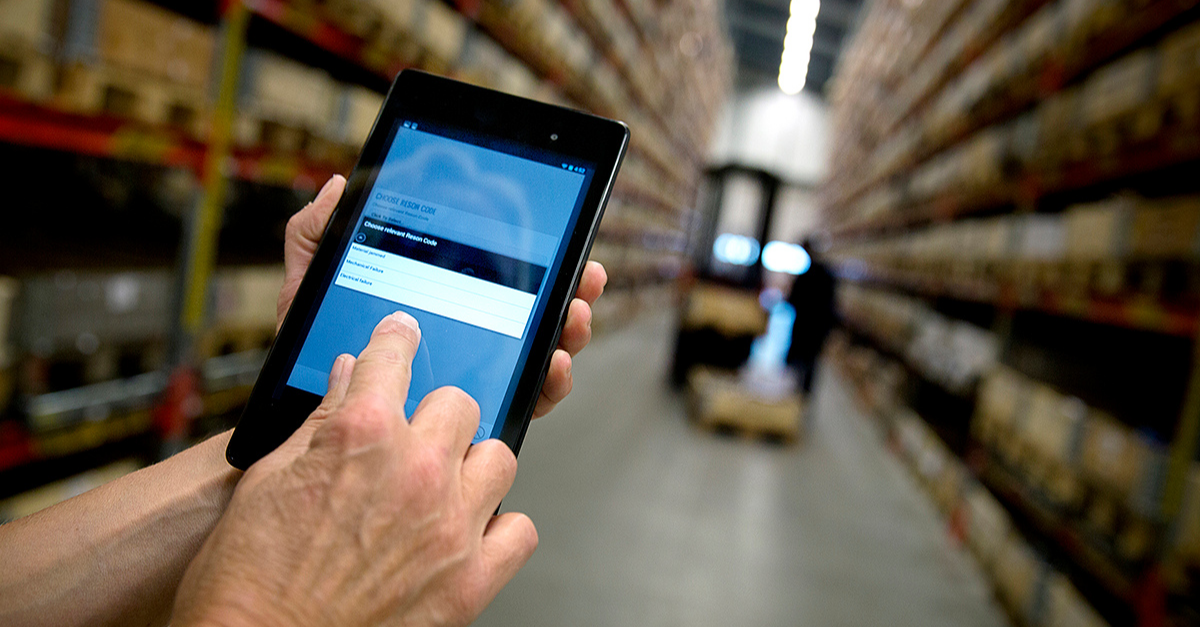How low-code can unlock the business value of Industry 4.0
Can you make Industry 4.0 manageable and profitable? At the same time, the technology, the processes, and even the products associated with Industry 4.0 are full of complexities and uncertainty. How do you manage the communication between all parts of the system securely? How to make any sense of the massive amount of data being produced? How can you connect everything and everyone involved in the process seamlessly and smoothly? The answers to these questions and many more are available directly from the file below. See how to manage Industry 4.0 requirements in your workplace. What Industry 4.0 is really about? Find the starting point Low-code as the Industry 4.0 engine Standardize data and make it scalable Increasing utilization of old machines Download Related articles : How low-code can unlock the business value of Industry 4.0 learn more Mobile solutions for WMS based on Novacura Flow learn more Reduce costs with returnable packaging management in supply chain learn more How to optimize cooperation between Production and Maintenance learn more More articles #Contact
learn more
Meet Business Process Management Demand
Picture this. You’re one of the largest beer manufacturers in the world, with thousands of employees and global name recognition. Your products have prominent locations in nearly every liquor store. But your inventory management processes—including ordering new products and getting those products out to retailers—is an administrative nightmare. People in the field need to keep track of inventory, sales, product specs and more. But that information isn’t updated in real-time: instead, the back office emails spreadsheets to the field sales team every few hours. This leads to poor inventory control, frustrated sales people and unhappy customers. This is the situation Carlsberg found themselves in at the end of 2013. But just a few months later, Carlsberg had: cut administrative time by up to 90%drastically improved data quality and speedeliminated their dependance on spreadsheetsHow did they do it?Through business process management. Specifically, Carlsberg analyzed their business processes, discovered inefficiencies, and used BPM software to digitalize their inventory management and ordering processes. These changes meant that: administrative staff weren’t constantly updating spreadsheetsfield sales reps could check inventory in real-timeall employees were more productive and could devote time to more valuable tasksThe results Carlsberg saw from their BPM initiatives are great. But more importantly: they’re not unique. Nearly every business—from the biggest corporations to tiny startups—can benefit from BPM. But before you jump in and start changing up your processes, it’s important to know what BPM is (and isn’t), how the BPM lifecycle works and how to measure the success of your BPM efforts. The team here at Novacura have been helping businesses achieve BPM success for over 14 years. We’ve even created our own business process management tool, called Novacura Flow, that you can use to map, analyze, model and optimize your business processes—and connect your processes directly to your business systems, like your ERP, MES, CRM, and WMS. So it’s safe to say that we’re experts in business process management, and we know the ins and outs of BPM initiatives both large and small. And now, we want to share our BPM knowledge with you. So let’s get started. What is business process management (BPM)? BPM is a group of principles, methods and tools to design, analyze, execute and track business processes with the goal of getting more value out of them. This value might be internal—better efficiency, higher quality products, faster shipping times—or it might be customer value (better service, faster reply times, etc.). The official definition of BPM, according to bpm.com, is this:Business Process Management (BPM) is a discipline involving any combination of modeling, automation, execution, control, measurement and optimization of business activity flows, in support of enterprise goals, spanning systems, employees, customers and partners within and beyond the enterprise What do you mean by a “business process”? A business process is the way you deliver a product or service to your customers. Business processes provide structure and help you create repeatable, executable tasks. Without business processes, you wouldn’t be able to do the same thing twice—ever. To put it another way: your business is made […]
learn more
How Novacura envisions the future of IT – 8 business trends
In Novacura we are always close to the real business processes and we observe the trends, so we can provide solutions that will support these trends in the upcoming years. In the user forum of Novacura in Feb 2022 our CEO, Johan Melander, shared our observations about business trends that all companies will face in the near future. He talked about what’s going to be important, observations and requirements in the future of the IT industry. 8 business observations were listed in this forum and we’re happy to share this knowledge with you and hopefully make it easier to prepare for what’s coming. 1. Be ready for change Change has always been part of business development, but now, due to Covid, change has come quicker than expected. We need to be more and more adaptive to the changes. Organizations need to deliver innovation and adapt more quickly to respond to the accelerating pace of business change. Gartner 2020 In March 2020, COVID changed everything: How do we work How do we purchase How do we sell How do we communicate It only shows how important is the ability to change for companies. 2. Everyone and everything will be connected All devices and everyone will be connected, which will, of course, affect all industries. To clarify our observation about connectivity, let us use the following example; How many ERPs do you see in the picture? In the future, we believe not only real people but also different devices, equipment, buildings, gages, computer vision systems, automated transportation systems, automated inventory systems, etc. will be connected – this is the IoT era. 3. Utilize AI It’s time to utilize artificial intelligence a lot more. We’ve started at the entry point when we get into the customer service and support areas. We will see a lot more of this. Reduce your workforce costs and demand by AI cloud service..your competitors have already started (…) Johan Melander, Novacura, CEO We dare say that more companies will implement it since it’s getting more accessible and affordable. 4. Adjust to your customer’s needs We also need to adjust to customer needs – millennials have tons of requirements. They want it all and they want it now, so we can no longer talk about the “target groups” or industries. We need to look at every company as unique and treat our customers (and users) individually. Customers and employees increasingly expect more contextualized and personalized application experiences. Gartner 2020 This is not only relevant for B2C where consumers request more and more individual treatment, but it’s also highly suitable for B2B. Companies have their own requirements and want to connect their suppliers into their ecosystems, which means – they require integrations based on their rules, boundaries, etc. 5. Process-based management: Process Data Mining It’s about time not only to define our processes, but companies should also establish a process measurement strategy and apply this way of thinking to all processes. Not only to production processes supported by MES systems but also to […]
learn more
How a Root Cause Analysis can lead to better BPM
Not every business process is perfect in its first iteration. In fact, almost all business processes need some finessing to achieve the best results. But figuring out exactly which improvements to make can be a challenge. What’s the solution? A root cause analysis. What is a root cause analysis? A root cause analysis is a way to identify the true cause of problems, issues and inefficiencies—in business processes or anything else, really—and to develop an approach for responding to them. Fixing the underlying cause of a problem, instead of just treating the symptoms, will improve process quality and save time, too: time you might be spending right now fixing the symptom of the problem instead of the problem itself. Think of it this way. Imagine you find mold in your house. What’s the first course of action? You might want to start by cleaning the surfaces with mold on them. But if all you do is clean the surface, the mold will keep coming back. In order to get rid of the problem for good, you need to deal with the problem at its source. How to perform a root cause analysis on a business process Assemble a team. Yes, you can conduct a root cause analysis on your own. But when you’re trying to find the best solution to a problem, it’s important to get input from many different perspectives. For example: if the root cause of the problem has to do with data migration, and you don’t know how or where company data is stored, you won’t have the right knowledge or perspective to get to the root cause. Together, define the issue. Be as clear and specific as you can. Analyze the issue using one (or more) of the root cause analysis techniques described below. Once you’ve determined the root cause of the issue, decide on the best plan of action. Implement your action plan. Root cause analysis techniques Five Ms The Five Ms is a root cause analysis used in both Lean and Six Sigma. The idea behind the five Ms is to look at the issue from different perspectives to try and pinpoint the cause, not just the symptoms. The standard Five Ms are: Man/mind power Machine (equipment, technology) Material (includes raw materials, consumables and data) Method (process) Measurement/medium (inspection, environment) Some people like to add a sixth M here: Mother Nature. Some people like to use an E instead: Environment. But the process is still the same. Think about the problem through the lens of these different factors, and see if you can find the root cause. Once you’ve analyzed the problem with the Five (or Six) Ms, you may want to visualize the problem in an Ishikawa (or “fishbone”) diagram. This video shows you how: Five Whys The five whys is pretty much as the name suggests: looking at a problem and asking “why” five times. Here’s an example: Problem: Items aren’t being shipped on time. Why aren’t they being shipped on time? There’s not enough stock in the warehouse. Why isn’t there enough stock […]
learn more
Problems that business process automation can solve
You’ve probably heard that business process automation—the method of automating tasks that are part of business processes—can help your company work faster, be more productive, and even save money. Sounds great, right? But what does business process automation look like in practice?
learn more
3 ways that mobility can improve your business processes
Often, the first step in a larger digital transformation plan is mobility: the use of mobile apps and devices to improve productivity. But it might not be practical to overhaul all your systems and processes at once. You might prefer a gradual adoption, and to take your time and learn about technologies before implementing them.
learn more
 January 25, 2019
January 25, 2019  6 min to read
6 min to read 












